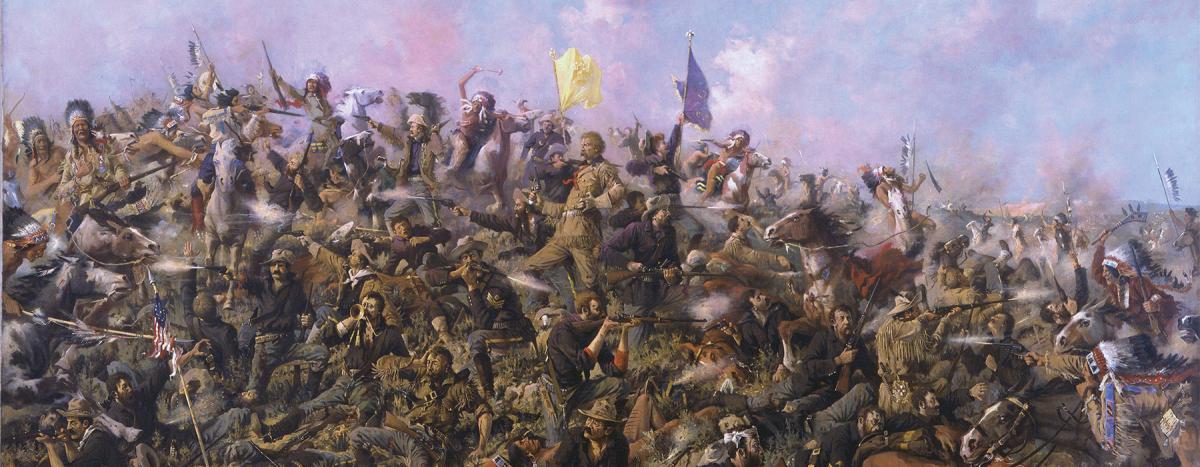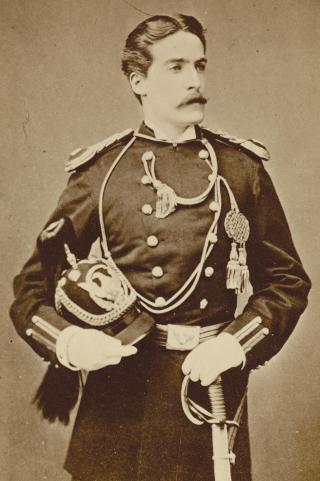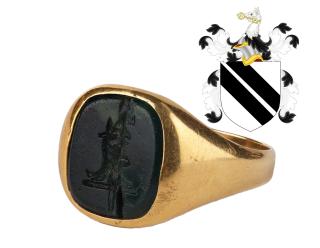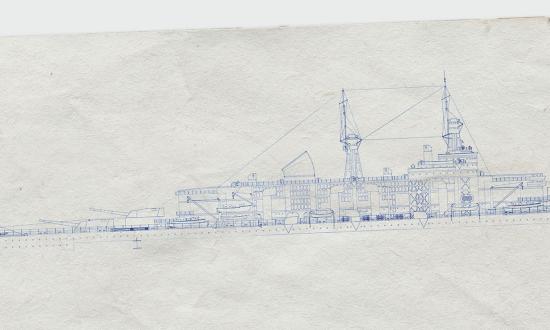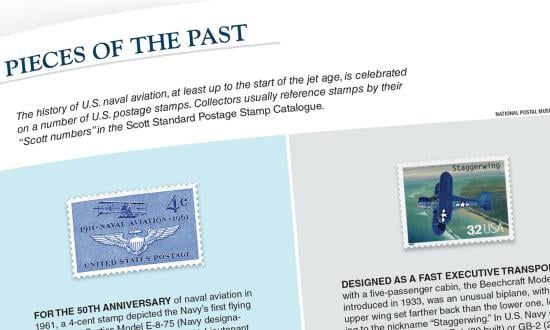An artifact in the National Museum of American History tells the intriguing tale of a U.S. Navy connection to, of all things, the Battle of the Little Bighorn.
When the dust settled on the evening of 25 June 1876, warriors from the Arapaho, Lakota Sioux, and Northern Cheyenne had destroyed five companies of the U.S. Army’s Seventh Cavalry on hills alongside the Little Bighorn River in the Montana Territory. Lieutenant Colonel George Armstrong Custer, regimental commander, lay dead among the bodies of 210 of his troopers.
When surviving companies of the regiment reached “Last Stand Hill” on 27 June, Custer and the other troopers’ bodies had been stripped of their clothing and personal items and ritually mutilated. One body, riddled with arrows, found alongside Custer was that of Second Lieutenant William Van Wyck Reily.
Born in 1853, he was the son of Passed Midshipman William Reily, U.S. Navy, who had graduated from the U.S. Naval Academy in 1847. Unfortunately, he was lost at sea on board the brig Porpoise in 1854, and father and son never met. The young man tried to follow in his father’s footsteps and in 1870 received an appointment to the Naval Academy. Struggling academically, he resigned in 1872. He later found work at the Washington Navy Yard supervising the dismantling of ironclad monitors from the Civil War.
Reily’s mother, concerned for her son’s future, wrote to President Ulysses S. Grant in May 1875 to request a commission in a cavalry unit on behalf of her boy, noting his father had died at sea in the line of duty. In October 1875, Reily received a direct appointment as a second lieutenant in the Tenth U.S. Cavalry.
He transferred to the Seventh Cavalry in 1876, joining Company E at Fort Lincoln, Dakota Territory, on 17 April. Within a month, the relatively novice cavalryman found himself on the trail of Lakota leader Sitting Bull and his followers.
The survivors of Custer’s Last Stand buried Reily and the other fallen on the field. Learning the bodies had been stripped, Reily’s emotionally devastated mother turned her attention to recovering her son’s gold signet ring. The green bloodstone signet bore the crest of the related Key family (of Francis Scott Key fame): a griffin holding a key in its beak. She sent out a flurry of letters and appeals to cavalrymen, Indian agents, and newspapers.
In 1877, she received word from an Indian agent at Fort Peck, Montana, that a Sioux, when shown a picture of the signet, mentioned seeing the ring in a hostile camp. As fate would have it, the ring already had been recovered by First Lieutenant William Philo Clark of the Second Cavalry. Clark purchased the ring from a Northern Cheyenne who had surrendered at Fort Robinson, Nebraska.
Clark promptly wrote to the Army and Navy Journal, providing a description of the ring and an offer to return it to friend or family member. The son’s ring soon crossed the nation and reunited with a tearful mother. On 3 August 1877, Reily’s remains were reinterred at Mount Olivet Cemetery in Washington.
In 1944, through a donation by Reily’s half-brother, the Smithsonian Institution acquired the ring—a small artifact with a tremendous story.
—Frank A. Blazich Jr.,
National Museum of American History



